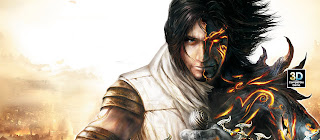Man of Steel: Exploring The Divine Nature of Superman

I have recently seen the full-length trailer for Zack Snyder's and Christopher Nolan's Man of Steel , and believe it warrants some thoughts. First off I should note that I have never read a single Superman comic, though I have watched all of the Richard Donner films and Bryan Singer's Superman Returns . Secondly, I would like to thank Nolan and Snyder for going back to the roots of the character, not in the origin sense, but in the being sense of the word. With this trailer both Snyder and Nolan ask the question, who is Superman? The answer, a god, more precisely God in the Christian understanding. Superman is one individual with two distinct sides, mortal Clark Kent, and divine Superman it is this duality that defines who Superman is. Both Snyder and Nolan fully embrace the divine aspects of the character without any reserve or trepidation. As with the Donner origi...







.jpg)
